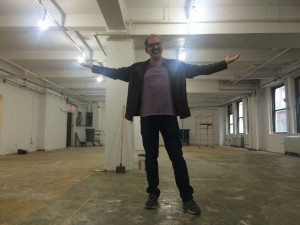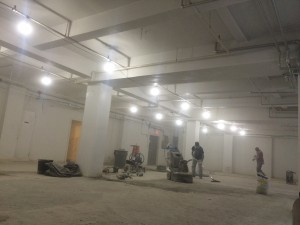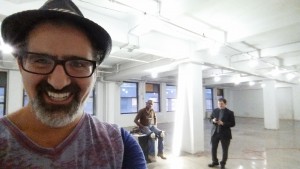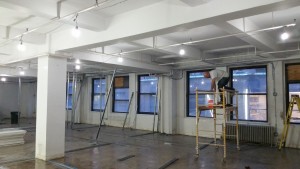[spb_text_block pb_margin_bottom=”no” pb_border_bottom=”no” width=”1/1″ el_position=”first last”]
Build Out Your Script: Choosing The Right Idea To Write
By Jacob Krueger
[/spb_text_block] [divider type=”thin” text=”Go to top” full_width=”no” width=”1/1″ el_position=”first last”] [blank_spacer height=”30px” width=”1/1″ el_position=”first last”] [spb_text_block title=”TRANSCRIPT” pb_margin_bottom=”no” pb_border_bottom=”no” width=”1/1″ el_position=”first last”]
As many of you know this has been one of the most exciting months in the history of the Jacob Krueger studio. We have recently signed a lease on a new location in New York City with an expected opening date of January 1st. We’re going to have three brand new classrooms, eight one-on-one offices for our Protrack mentorship program, and plenty of space for our students to write and to gather.
 This is the culmination of a dream that started about ten years ago for me and my staff. And in the process of finding and now building out that space, I’ve learned a lot of lessons, many of which apply not only to New York City real estate, but also to screenwriting.
This is the culmination of a dream that started about ten years ago for me and my staff. And in the process of finding and now building out that space, I’ve learned a lot of lessons, many of which apply not only to New York City real estate, but also to screenwriting.
So, in this series of podcasts I’m going to be sharing some of the lessons that I’ve learned and how they relate to screenwriting.
Lesson #1:
The Perfect Space & The Perfect Idea Have One Thing In Common: Neither Of Them Actually Exist.
Over the past six months I have probably looked at about five hundred spaces all throughout New York City. And I’m not even going to talk here about the spaces that were obviously not a fit for my school, I want to talk about the ones that potentially were.
Because the process of finding a space is a lot like that unenviable hunt for the perfect screenplay idea. Oftentimes during the process of searching, it feels like we’re never going to find that right idea or we’re never going to find that right space.
And that’s because spaces, like ideas, tend to fall into two categories…
The first are the ones that look perfect when you first see them. They’re in the right location, the right size, the right price. And these are few and far between. But when you look at them you get so excited, only to realize once you get involved in the negotiation, just like once you get involved in the writing, that there are problems that you never anticipated: crazy landlords, unexpected bidding wars, hidden costs, or clauses in the lease that you never would have expected when you first sat down to look at the space.
The second category of spaces are the spaces that have obvious problems and in New York you can imagine what those problems are: they’re either too expensive or they’re in the wrong place. And the process of looking at space after space after space trying to find the right combination of size and prices and location reminded me of a time in my own screenwriting career, shortly after I’d finished The Matthew Shepard Story.
The first draft of Matthew Shepard was without a doubt, at that point in my career, the best thing that I had ever written. And I remember setting the goal that this next project, whatever it was, had to be better, even better, than Matthew Shepard.
And I remember going through a process of rejecting idea after idea after idea. It was one of the rare times in my life during which I actually had writers’ block.
No matter how good the idea was, I could always see a problem. I could always see something getting in the way. I always felt like it wasn’t quite going to match up to Matthew Shepard.
And if you’re a writer you’ve probably had this experience before as well, feeling like no idea is good enough, or embarking on an idea that feels perfect, only to realize that there are problems underneath that you didn’t anticipate and that you don’t quite know how to handle.
In the process of finding a space, ultimately I had to decide on what was really important to me. The things that I knew were vital: I needed a ten year lease. I wanted a permanent home, a place that my students could call home for a long time and a space big enough for us to grow into it over that ten year period, so that we could continue to add classes and programs to serve our students.
And I knew that I needed a convenient location. I knew I needed a space that was close to Penn Station, where students from New York City, Connecticut, Brooklyn, Long Island, New Jersey, The Bronx, Harlem, Queens, could all easily reach it.
And getting a space like that meant making some compromises. And you can probably imagine what many of those compromises were. But the hardest was recognizing that we might have to take on a space that needed a lot of work, a lot of time and effort before we could even move in. One that would have to be shaped into the perfect home for our studio rather than starting out that way.
 Similarly, trying to find the perfect idea as a screenwriter, the idea that’s going to be commercially viable with the obvious hook, the emotionally moving structure, that’s going to be exciting and fun to write, fitting with your talent, castable, in sync with what’s happening in the market right now and adaptable for things that are going to be happening in the future… these projects just don’t exist!
Similarly, trying to find the perfect idea as a screenwriter, the idea that’s going to be commercially viable with the obvious hook, the emotionally moving structure, that’s going to be exciting and fun to write, fitting with your talent, castable, in sync with what’s happening in the market right now and adaptable for things that are going to be happening in the future… these projects just don’t exist!
So, how do you pick the right project to write?
The first step: just like I needed to find criteria for my school, you need to find some criteria for your ideas.
Rather than looking for that perfect idea, that be-all-and-end-all idea, as if this were the only screenplay you were ever going to write, you want to set some criteria for yourself about what kind of project is going to serve you right now?
It might be an idea that grows a certain skill in you. For example, if you look at the work of Darren Aronofsky. For the early movies in his career, Darren Aronofsky consistently shot for the clouds, writing incredibly complicated scripts with multiple layers of complexity. Sometimes, he shot for the clouds and reached them. And sometimes, he shot for the clouds and went plummeting back to earth, most notably with the writing of The Fountain— one of my favorite broken movies– a rare script that universally both critics and audiences agreed just did not work.
And after writing The Fountain Darren Aronofsky found himself at a really dark point in his career. And he turned around and wrote a movie much different than the others he had written.
It was a simple story, with one main character going on a simple, linear journey. It was a movie called The Wrestler and it re-launched Aronofsky’s entire career. Even though it didn’t necessarily fit with the incredibly complicated work he had done in the past, it developed another level of craft in him, another level of comfort with structure, and an underlying simplicity that quite frankly wasn’t present in his early films.
And what’s really interesting is that by allowing himself to create a movie– a decidedly un-Aronofsky movie– like The Wrestler, he actually ended up laying the foundations of another movie called Black Swan.
In fact, and he has spoken quite frankly about this, Black Swan is actually built on the bones of The Wrestler. Black Swan is the result of Aronofsky first creating The Wrestler and finding that simplicity, and then building a symphony on top of that one simple drum beat.
So, sometimes the right criteria comes from simply looking at an aspect of your art or your craft that is a little bit underdeveloped, and giving yourself the challenge of building that skill in your writing. Sometimes it’s stepping into a new genre. Sometimes it’s writing at a different budget level, or in a location that you control where you can easily shoot. Sometimes it’s finding a theme that matters to you, or finding an incident from your life that you don’t completely understand or a question you don’t quite know the answer to.
But it’s important to recognize that just as a space, when you find it, isn’t always in the shape you need it to ultimately take, similarly ideas need to be built upon before they actually take shape.
There’s a famous story about M. Knight Shyamalan in the process of writing The Sixth Sense. Somewhere around Shyamalan’s fourth draft of The Sixth Sense, a movie called Casper came out, and Shyamalan famously threw out his draft, called his agent, and said “Well, Casper the Friendly Ghost came out so there goes that.”
Fortunately, he had good people around him who forced him to keep writing. But what’s really interesting is that it wasn’t until somewhere around the tenth draft of The Sixth Sense that Shyamalan realized what the idea really was.
You see, in that early draft, the truth was, Shyamalan was right. All he was really doing at that point was a live action update of Casper the Friendly Ghost. Because, at that point, Shyamalan had not yet realized that Bruce Willis’s character was dead.
In fact, he recounts a story about realizing somewhere in the middle of, I believe it was the tenth draft, somewhere in the middle of a very late draft realizing “Oh my G-d, this guy is dead.”
And note the wording there. He didn’t say “Oh my G-d I could make this guy dead,” he didn’t say “Oh my G-d my screenwriting teacher said I should make this guy dead.” It was the process of writing, of getting to truly know the character that allowed him to realize what was already true: “Oh my G-d this guy is dead.”
Often times our ideas start out like little babies, not like the fully polished adult screenplays that we dream of writing. And if you think about babies, sometimes it’s hard to see the full possibility of what that child can become when it’s still drooling and crying and has a little bit of pudge in all the wrong places.
But the amazing thing is that if you nurture your idea, you can turn almost any idea good.
I was lucky enough on my space to bring in a really talented team of architects, Javier Carcamo and Dylan Gould of Rockstar Architecture in New York City. And what Javier and Dylan showed me was a space that I saw as a little bit rough, and a little bit raw, could be transformed into the space that I needed for my students. How some of the weaknesses of the space that I perceived could be transformed into strengths. How we could eek out space for offices in areas that I didn’t even realize were usable. And how the bare bones of the architecture that was currently there could be removed and changed in order to perfectly house our classes.
And this process is so similar to the process of writing a screenplay.
Sometimes in early drafts, and early in our careers, we don’t yet have all the knowledge that we need to know exactly how to build out our idea into one that we can sell or one that will tell the story that we want. Sometimes we have a germ of an idea or a hunch or a feeling or a hope, without yet having the resources to build that idea into the shape we need, or even see what it can become.
But when in doubt, there is a simple way to make a decision about which idea to pursue. And that’s to go with your gut.
In general if you don’t know what idea to write, write the idea that you’re desperate to write— whatever idea you have that you’re most excited about!
Or, write the idea that scares you the most. Write an idea that creates an emotional reaction in you. And it is certain to take you somewhere interesting.
The important thing is to choose an idea. Don’t make the mistake that I made after writing The Matthew Shepard Story and spend six months looking for the perfect one, because it’s not going to come. Choose an idea. Any idea. Find the resources you need to make it great. And don’t stop working on it until it is.
The hardest part of writing is not writing. The hardest part of writing is starting.
And even if you choose the wrong idea, or even if your idea isn’t perfect, by pushing on an idea harder and harder and harder, by choosing an idea that matters to you, even if it’s imperfect, and following that idea to its end, you’re likely not only to discover the real idea that you really need to write but also to develop yourself as a writer, in a way that serves everything you write moving forward.
The truth is, nearly any idea can be shaped into something good. And the truth is even the worst or the most problematic idea, as long as it explores something that matters to you, as long as it fulfills the basic parameters that you’re looking to explore, is certain to lead you to something better.
The truth is, I don’t know where I’m going to be in my space ten years from now. Ten years from now I may still be operating the exact same space, I may have three more floors in the same building. I may have remodeled the space to serve the developing needs of our students.
It’s only the process of moving forward with an idea that shows us what it truly can be and what it truly needs to be.
The plans that we posted when Javier and Dylan first started their design are already different than the design that we’re following now. But what matters with an idea is not the plan and not where you end up. What matters is the process by which you get there.
[/spb_text_block]



